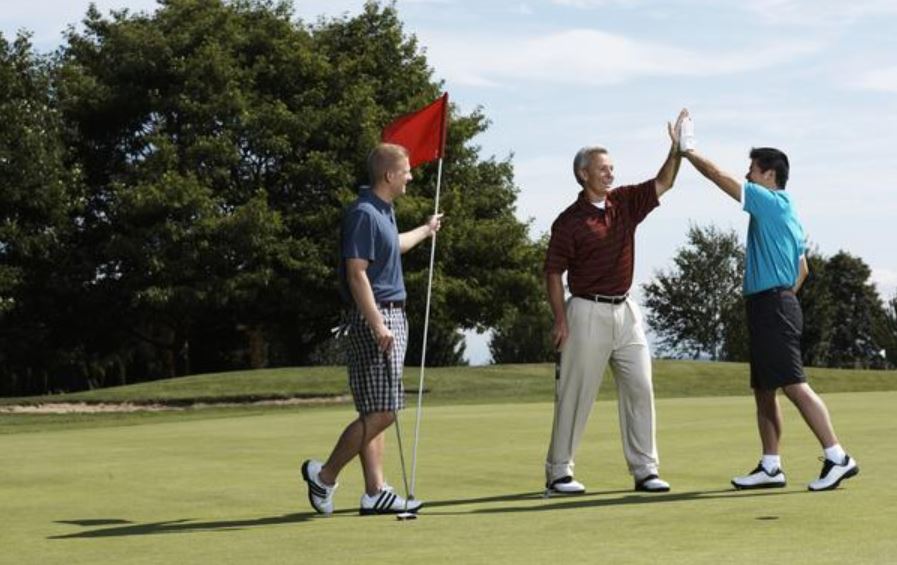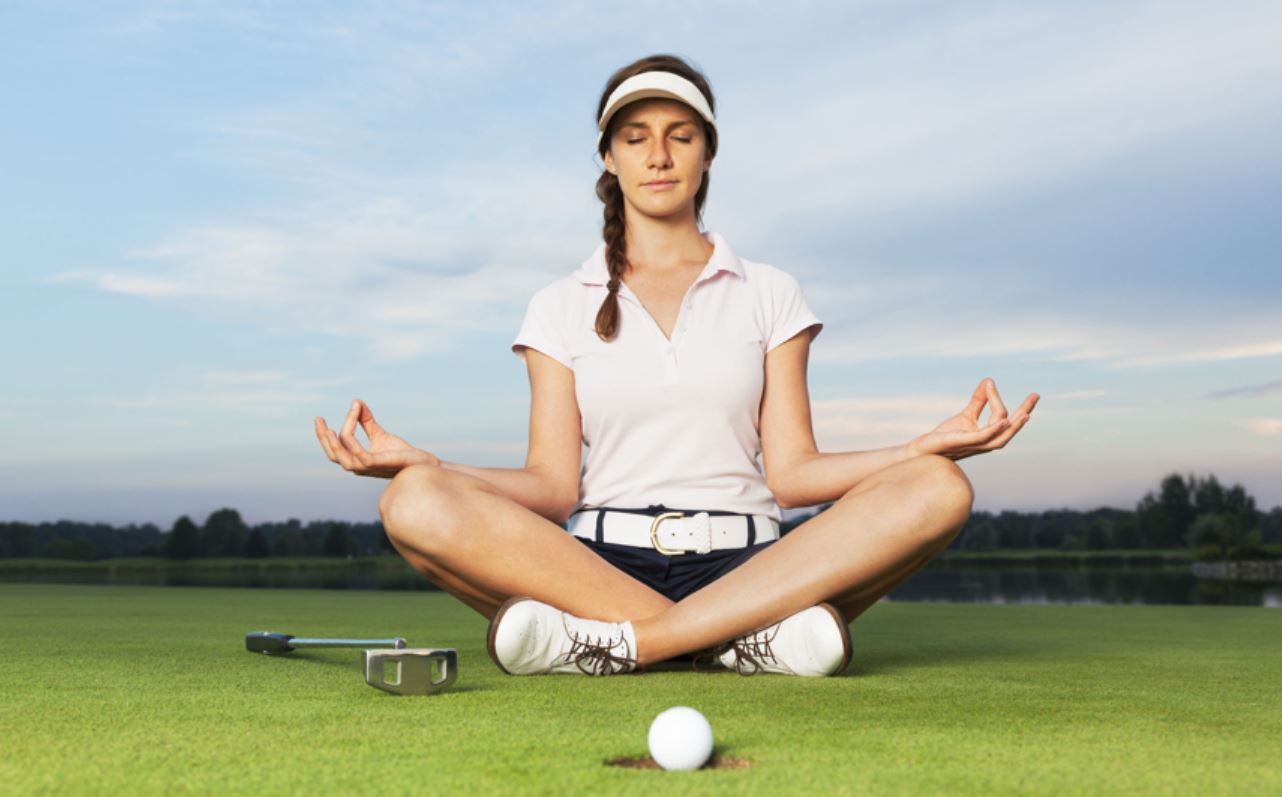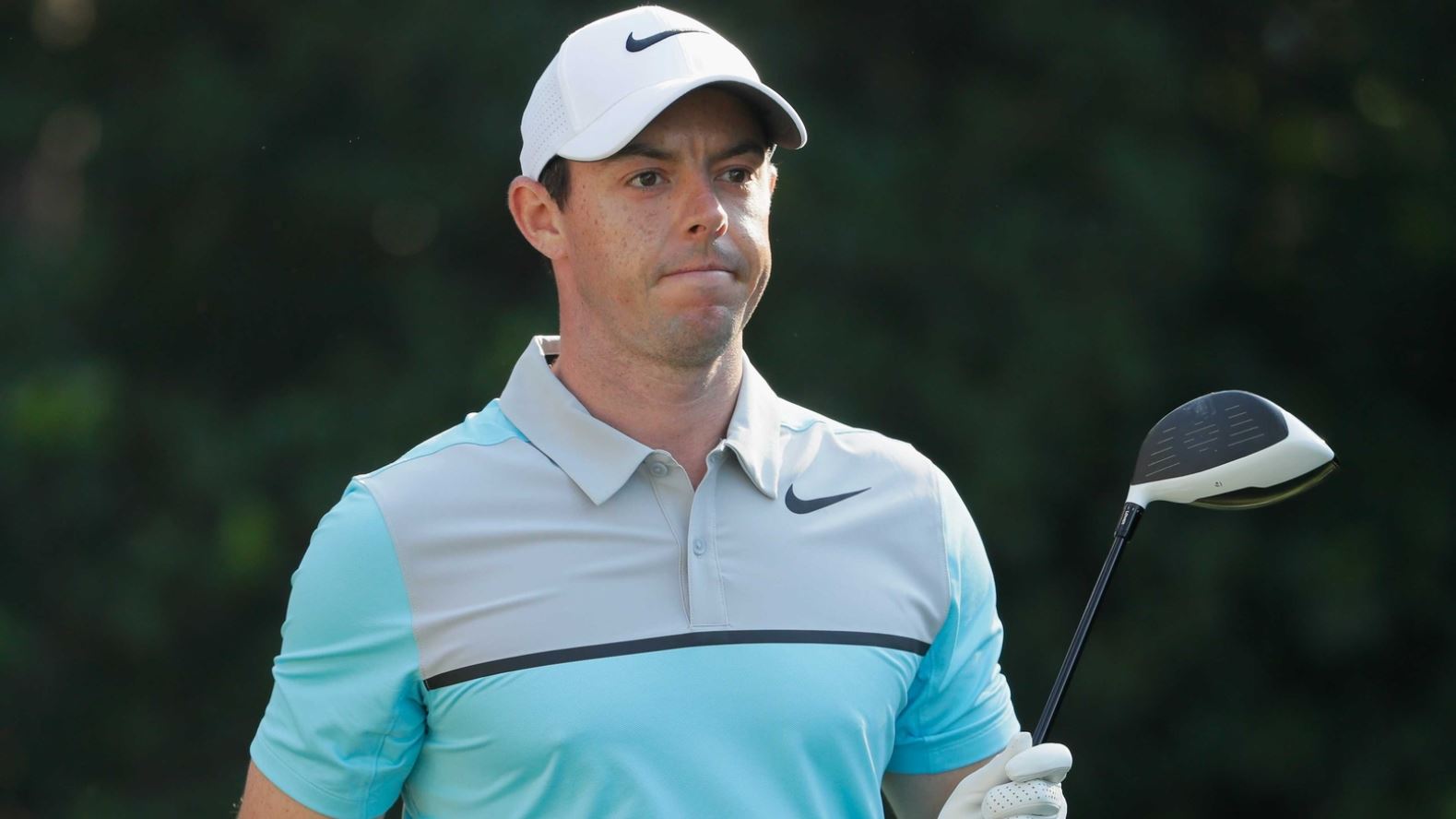Does Golf Burn Calories – Is Golf Enough Exercise For Keeping Fit?

Whether you’re training your skill level or looking for a perfectly healthy excuse to get outside and get moving on a sunny day, golf can be a great way to tone, sculpt, get moving, and most importantly, play your way to a healthy lifestyle.
If the brilliant green of the course, smell of freshly cut grass, and the engaging ping of a successfully hit golf ball all swing you to your happy place, you’re already in luck—even if you’re not on your “A” game, you could actually be benefitting from a morning out on the course in more ways than one.
In this article, we’re going to go through how golf for exercise can not only be an effective workout for your body but also how it can mentally and emotionally benefit your health.
So, whether you’re into golf for the calming, surrounding serenity, the challenge of each new hole or to simply catch up with buddies in an active and fun way, golf can be great for your mental, physique, and emotional health.
The Benefits vs. Not-So-Effective Factors of a Game of Golf: Deuce or Duff

Before you go out and get into the Zone (and on the green), you should be happy about the physical and mental benefits of the game of golf. Golf is great for unwinding and relieving stress or just enjoying your Saturday with a great way to connect with people and have fun.
Depending on your fitness aspirations and current condition, you might want to think about pairing your once-a-week golf game with some other aerobic or anaerobic activity.
Take a look at these benefits—and also how you can up your (health) game over a round of golf every Sunday:
Getting In an Effective Workout

Although it is already classified as a sport—for many years now—you might want to know what the actual physical movements make it “workout-worthy”:
- Walking: If you opt to walk the course, your body’s getting in an effective cardio workout.
- Swinging: Even if you’re planning on just hitting some drives today, the movement of swinging can really get you moving.
- Bending Over To Pick Up Balls And Clubs: Opting to golf without a Caddie can also be physically beneficial since you’re adding more movement.
We’ve Figured Out The Perfect Round of Golf…
For burning calories, that is.
Since there are so many different ways to burn calories over 18 and 9 holes, we’ve decided to lay out the numbers for you to make your pick on how you want to approach your next round for maximum benefit:
According to a study done by the Walking Golfers Society and Neil Wolkodoff, the results found how big of a difference these various ways to play golf can make:
While carrying a bag, a golfer will burn around 721 calories, while the same golfer would burn a little less—718—by pushing a cart.
With a caddie, the golfer burned less—only 613 calories—and the golfer driving around in the cart only burned through an average of 411.
So, the next time you go out for a round of golf and want to maximize your exercise, think about those numbers!
If You Decide to Walk a Round of 18 Holes:

As we’ve already mentioned—and will mention over and over again—if you’re looking to get an effective amount of movement during your game of golf, you’ll want to opt for walking instead of saddling in the golf cart to drive the distance from one hole to another.
In a game of golf—on average—you can end up walking around five miles over a full-length course. Walking five miles alone in an everyday setting is most likely not your preferred type of exercise. However, when complemented by a mentally-challenging and focused game of golf (paired with your weekly catch-up chit chat with your buddies), you might not even realize how much ground you’re actually covering!
And, how many calories would you burn doing so?
According to Golf Monthly, depending on the course (if it’s hilly or more spaced out)—and also your own body and how hot it is—you can most likely burn the lower end of the average of 1,400 to 1,500 calories up to 2,400 calories.
What About Just Swinging A Club?
If the driving range is your happy place, we’ve checked out a very number-oriented study to see how many calories you would burn from just swinging a club.
Measured and taken with an average of 40 full swings, the study showed that a person will burn around 3.5 Calories per swing equals 140 Calories total.
So, if you’re opting for the driving range rather than the actual course, just know you won’t be burning anywhere near the same number of calories.
(THIS IS THE CHART FROM THE STUDY—YOU CAN REMOVE IF NECESSARY)
| Golfer Type | Male Scratch | Male 5 Handicap | Male 13 Handicap | Female 18 Handicap |
| Work in Calories | 0.35 | 0.34 | 0.26 | 0.21 |
| Energy in Calories | 3.5 | 3.4 | 2.6 | 2.1 |
| Peak Power in Watts | 3875 | 3005 | 2310 | 1720 |
Looking to Lose Weight by Playing your Favorite Game?
Want to have another healthy excuse to play a round of golf on Sunday with your buddies?
Well, according to IndiaToday, there was a recent study in the British Journal of Sports Medicine, which helps you get the argument ready for your wife:
A round—or 18—of golf can help you reach that “moderate-to-intense physical activity” level that you need to stay healthy and get you that green check at your next visit to the doctors.
No matter your age, physical, and mental health status, a few rounds of golf can help you get in your aerobic exercise.
However, to help you stay as healthy as possible, you need to accompany your rounds of golf with hydration and a healthy diet!
Let’s Focus On Your Mental Health: How Does Golf Reduce Stress?

Just like most other sports, golf can be extremely beneficial to your mental health.
By alleviating stress through not only movement but also by giving you an environment where you feel most comfortable with friends and being socially-active, golf can help improve your mood and reduce symptoms of depression.
The game of golf also takes a certain (high) amount of concentration, which can help increase your mental capacity and problem-solving ability.
All of these improving benefits can help have a positive effect on your everyday health as well as a powerful, lasting, cycling effect on your golf game—the more you play, the healthier you’ll be—and the healthier you are, the better you’ll get!
Is Hitting Golf Balls At The Driving Range Good Exercise?
In an unofficial, experimental test done at PracticalGolf.com, although whacking a few golf balls at the driving ball may feel alleviating and stress-reducing (helping you focus all negative feelings into that little ball), it may not give you that 150-minute, American Heart Association-recommended exercise you need.
The test took a look at heart rate, which throughout the golf-ball driving range “workout”, the tester’s heart rate only reached an average of 97-100 beats per minute, which qualifies as “light exercise” at only about 50 percent of the maximum heart rate.
A Back-Healer or Hurter: Is Golf Good Or Bad For Your Back?
Although the exercises that can help your golf game can be beneficial for building strength and your back and the game of golf can be positive for your flexibility and movement, just like any other sport—golfing can lead to sports injuries.
Especially with the common injury of muscle strains and sprains, golf may lead to lower back and spinal pain.
If you are already dealing with chronic or recurrent episodes of lower back pain, golf may not be the best sport for you.
Staying Fit On The Fairway: Does Playing Golf Keep You Fit?
The game of golf can help you work towards the American Heart Association-recommended 150 minutes of moderate-intensity exercise per week, however, it might not be enough to solely play one game per week.
You may need to add in a few miles of brisk walking per week, as well to help you truly reduce your risk for heart attack and stroke.
According to Harvard Men’s Health, an 18-hole game of golf can be beneficial for your fitness level but needs to be accompanied by more exercise throughout your week—and would be most beneficial when walking the course.
Buff or Duff: Does Golf Build Muscle

How often you play and the exercises or workouts you engage in while or to complement your golf game, can have an impacting factor of whether or not you build more muscle.
Whether you want to complement your weekly rounds of golf with a workout to stay fit and healthy or if you’re looking for exercises that can actually help your golf game, here are a few ideas for your next workout, including compound lifts and core exercises: Top 5 Muscle Gaining Exercises For Golfers.
Golf: The Perfect Game for Seniors to Socialize and Work on Fine Motor Skills
Not only does playing golf help with physical benefits for seniors, like moderate-level activity, fine motor skills, and a pristine focus on their actions, it’s also a great way to keep them socialized and invested in being around other people (hopefully, their friends).
According to Dr. Andrew Murray, the University of Edinburgh’s sports medicine consultant, regular golf-playing can lead to improved lung function and an increase in protection against coronary artery disease, type 2 diabetes, stroke cancer, colon cancer, breast cancer, and so much more.
Keeping It Solo: Is Golf On Its Own Sufficient Exercise?
Even if you plan on going for a loop on your own, singling out a game of golf can be quite sufficient for exercise—but it depends on how often you play.
Not only is the frequency of play a deciding factor, but the implementation of other sports and complementary exercises can also help you reach your recommended, weekly workout goal.
And although it’s recommended to walk the course to get the most physical benefits out of a game of golf, the extra exercise can also actually help your game.
Neil Wolkodoff, who is the Rose Center for Health and Sports Sciences Director, mentioned that when supplemented with jogging, spinning, yoga, strength conditioning, swimming, and cycling, the golfer will tend to be in better shape—which will reduce her or his maximum heart rates, decrease that accumulation of lactic acid, and improve those finer movements that golfing needs from not being so out of shape.
This study helped show the “aerobic and anaerobic conditioning off the course will improve performance and endurance on the course.”
From First-Tee to Last Round: Wrapping Up Our Golf-Game Findings

Playing golf for exercise can seem pretty enticing—like finding out your lazy Sunday morning routine is actually quite beneficial.
Although we’ve found that solely hitting balls at the driving range doesn’t quite cut it for calorie-burning, an 18-hole round of golf—when walking the course—can get you moving enough to tee off a big chunk of that recommended 150 minutes of weekly exercise.
So whether you’re a Sunday-Round Regular or if you’re thinking of turning one of your friendly meet-up into a regular healthy hobby, turning your golf game into an impacting, beneficial factor for your fitness can be easy!
It doesn’t matter if you’re swapping out your golf cart for your own two feet or if you’ve decided to implement a few strengthening exercises to up your golfing game, we hope that the information in this article can help you get your golf game up to be fully fit for exercise!



